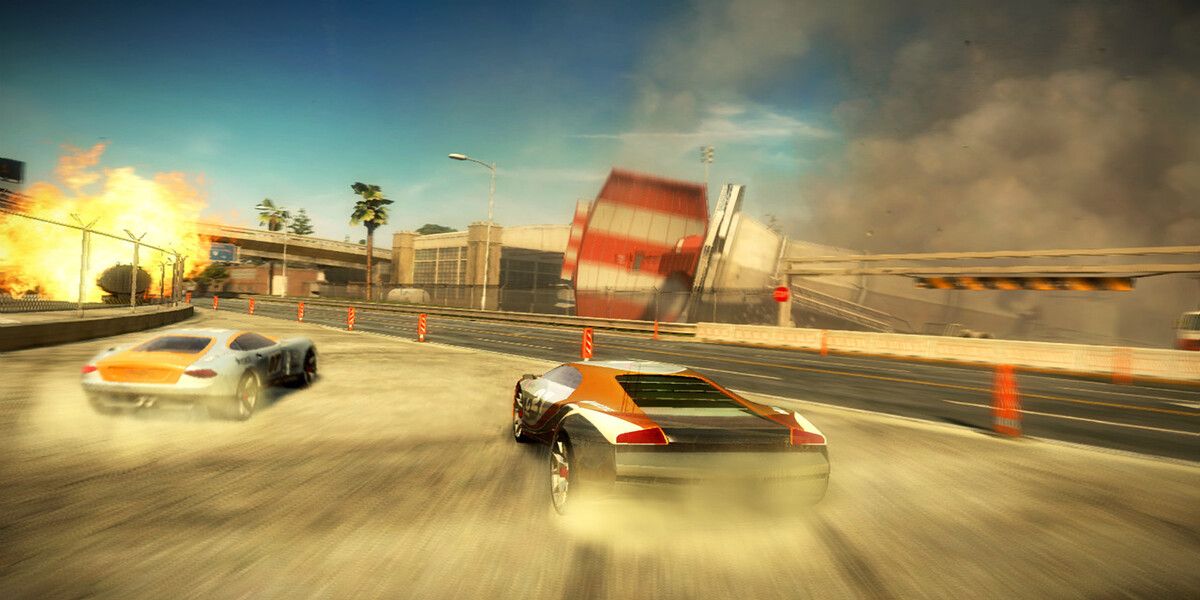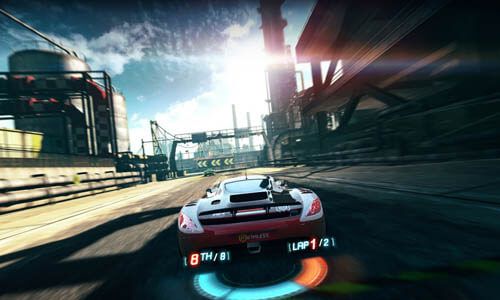While Toronto already has quite a few conventions that frequent the city each year, including Fan Expo and Anime North, a new contender has been added to the list: Wizard World's Toronto Comic-Con.
Spanning from March 26 to 28, the event's main focus is set firmly on comic books, graphic novels, manga, and the culture surrounding them. Even so, I was not at all surprised to see the video game medium make an appearance, considering the overlapping nature of comics and gaming in the past. I was pleasantly surprised however, to see that rather than promoting an upcoming comic tie-in, Disney Interactive Studios was present promoting their upcoming racer, Split/Second.
Greeting me at the booth was Mark Orgel, Assistant Producer at Disney Interactive Studios. Being my first time playing the game, he went over the controls and explained the various features that set this game apart from other arcade racers. For those of you who are new to Split/Second, it's an action-racing game developed by Black Rock Studio and published by Disney Interactive Studios which drops you right in the middle of a reality TV show in which racing is the sole focus. Rather than play out like any other racing title, Split/Second, gives the player the ability to manipulate the environment around them. This allows them to change the layout of the course to work in their favor or to make life more difficult for their opponents. This is done through the use of the player's powerplay meter which grows as they complete stunts and drive like a maniac.
As I jumped into my first race, I immediately noticed the lack of a traditional HUD. Instead, all the vital information is located just below the rear bumper of your car in neon lights. This makes it easy to quickly glance at the energy stored in your powerplay meter while also checking the lap number and your position among the other racers in one convenient location without the information taking up space elsewhere on the screen, detracting from the insanity onscreen.
Speaking of onscreen insanity, you never know what to expect from the other racers. While you have access to the powerplay meter and the ways in which it affects the environment, so do your opponents. Upon making my way to first place, it came as quite a surprise when a transport truck on the side of the road suddenly burst into flames and exploded as I passed it, sending me straight into the median, allowing the racers behind me to quickly regain their places at the front of the pack. Although each of my playthroughs took place on the same course, each race felt completely different with opponents taking advantage of any mistakes I may have made while drifting or choosing lines, sending my car out of control at the most inopportune moments with falling debris and explosions. Also, when they say that you can use your powerplay to alter the racing environment, they really mean it. On this specific map, I was able to send a giant tower toppling onto the track, changing almost half of the course in the process as racers were re-routed onto the fallen tower's remnants, flying over the destruction it had caused.
The minimalistic HUD opens up the screen to allow the player a full view of the beautiful landscape.
The controls though, were not what I had originally expected. Judging by the look of the game, I expected a driving experience similar to the Burnout series. Instead, it felt like a hybrid of both simulation and arcade racing elements. While the cars definitely gave off a sense of speed, the drifting, while simple to grasp, took some getting used to. This may have been due to my expectations that the cars would have the ability to turn on a dime while racing along the track at ridiculous speeds. What I found though, was a mix of the speed which is normally associated with arcade racers while still giving the cars a realistic feeling to them as if they actually have weight behind them. While this may turn off some gamers looking for a purely mindless racer, I enjoyed the satisfaction that came from executing a perfect drift around a particularly sharp corner, finishing cleanly on the other side.
Following my in-game experiences, I talked to Mark about a new system they will be implementing in order to reward skilled drivers.
"As you are unlocking achievements in the game, you are getting decals for your vehicle to represent those achievements. In addition, the rating number on the side [of the car] represents your ranking. As you play online, you will be ranked against other players. That number and the decals are a way to show off how good you are and what type of racer you are to all the players just by looking at your vehicle."
While this may seem like a simple addition to the game. It will allow racers to quickly size up their opponents in the heat of a race just by looking at their car and the decals they have accumulated. Not only that, but it will provide added incentive for the gamer to strive towards winning any way they can.
Having heard very little about this game prior to attending Toronto Comic-Con, I was pleasantly surprised by what I experienced on the show floor and am grateful for the time Mark took to discuss the game with me.
Whether you're a fan of racing games or action games, you should keep an eye on Split/Second which will be racing onto the Xbox 360, PS3, and PC on May 18 in North America, and May 21 in Europe.
What are your thoughts on the ever-changing courses? Do you prefer the chaotic action of arcade racers or are you more interested in simulation racing?


